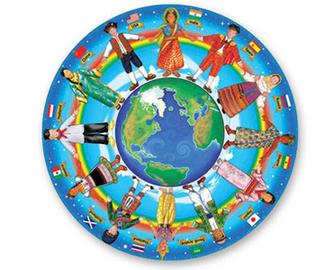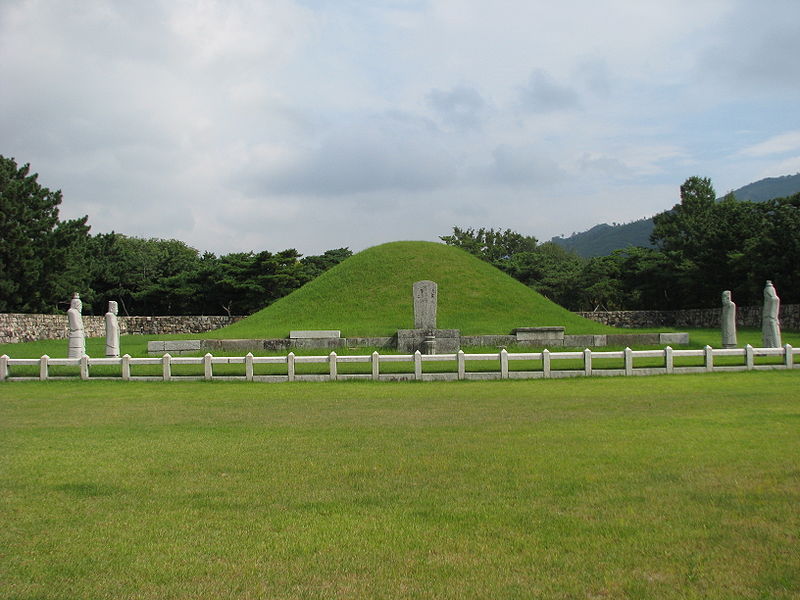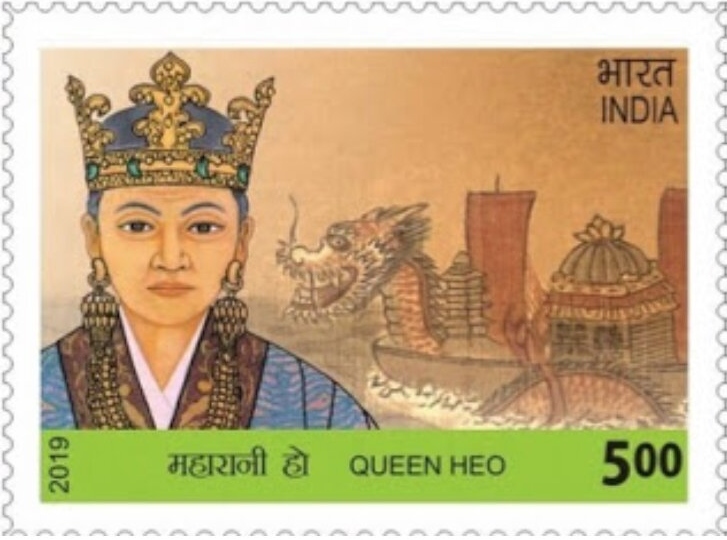By Srishti Khurana

Korean culture has gained much popularity across the globe in the last two decades. What is deemed as the “Hallyu wave”, has seen people from many countries take a liking to Korean popular music, dramas, food and beauty products. The biggest evidence for this popularity for me was when I went to the Netherlands earlier this year and ended up talking to my friends from Germany and the United States about our love for Korean dramas.
There is no dearth of diversity when it comes to India. Even for a person who migrates from one state to the other, there is enough that one has to get accustomed to. A new language, new cultural, new food etc. Now, to think that a country five thousand kilometers east of India has a link to ours is a little hard to believe.
The language
Surprisingly enough there are around 500 words from the Korean language which are the same or similar to their Tamil counterparts. This similarity was first observed by French missionaries in Korea. One example of this is the word ‘Appā’ which in Tamil means father and ‘Appa’ means the same in Korean. This relationship was further studied by Homer B. Hulbert who came up with the proposal of Dravido-Koreo-Japonic or simply Dravido-Koreanic language family. This proposal talked about a genetic link between Korean, Japanese and the Dravidian language. According to Hulbert, the names of some southern Korean ancient colonies were Dravidian words. The Karak Kingdom which according to Hulbert comes from the proto-Dravidian word for ‘fish’. This theory was not accepted by linguists because the evidences were thought to be only typological which isn’t considered to be enough proof.
The Food, the Culture and more
As observed by the consul general of Korea, Kyugsoo Kim, who visited Mahabalipuram back in 2016, the similarities in culture don’t stop at the language. Koreans like Indians take off their shoes before entering their houses. Both bow in front of elders as a sign of respect.

If we look at the family structure, it is also alike the one here. Most kids continue to live with their parents even after reaching adulthood.
There is a traditional board game in Korea which is played at the time of Korean new year. This game called Yut is believed to have been originated from an Indian game Pachisi. When compared to Thappaattam a traditional Tamil dance, Korean drum dance has at least 12 similar movements.
There are a number of similar dishes as well like Bin dae duk which is a Korean pancake made of lentil and rice very similar to an Indian chilla or Pesarattu. Dishes like rice cakes, rice puffs and fermented pickles are an important part of the culinary culture of both countries.
The Queen

If legends are to be believed, the queen to the Karak clan headed by King Kim Suro was Heo Hwang-ok, the princess from the kingdom of Ayuta. Ayuta which you may find interesting, is believed to be present day Ayodhya. The Indian name of the princess was Princess Suriratna. This story is a part of a collection of stories from the three ancient kingdoms (Baekje , Silla and Goguryeo) of Korea known as Samguk yusa. The royal couple had 10 children out of which two of whom kept the Queen’s surname. The Gimhae Kim, Huh clan and Lee clan of Incheon are considered her descendants. They make up 10% of Republic of Korea (RoK) ’s population. There are also stories about how Princes Suriratna’s brothers had a part to play in bringing Buddhism to Korea.
Hwang-ok’s grave is in Gimhae and beside that of King Karak, it has stone Pagoda in front of it. The stones for this have been believed to have come from Ayodhya.
It all started with a dream, I have come across different versions of the same story. Some say that the King of Ayodhya, princess Suriratna’s father had the dream, some that it was the princess’s dream and few that it was King Kim Suro who had the dream. In any case, the dream was that the princess Suriratna is to marry the Korean King. She was 16 years old when she set out on her voyage to the Korean peninsula. In Korea the Kim Hae festival is celebrated as the day on which princess Suriratna is believed to have reached Korea.

To mark this connected history a small memorial for Queen Heo Hwang-ok was inaugurated back in 2001. It is visited by lakhs of Koreans in the month of March to pay respect to their queen on her anniversary.
In 2018, Korea’s First Lady Kim Jung-sook visited the city of Ayodhya and laid the foundation for a grand memorial that will be built in the queen’s name in the Queen Heo Park proposed to be constructed in Ayodhya along the Sarayu river. The cities of Ayodhya and Gimhae have been declared as sister cities. A museum dedicated to the princess is being built in Gimhae.
Another symbol which links the city of Gimhae and Ayodhya is the symbol of twin fish. It is the state symbol for Uttar Pradesh and is also present on the gate of King Suro’s tomb. This symbol has been associated with the Mishra royal family of Ayodhya. Bimlendra Mohan Prasad Mishra who is the member of this family was invited by the Korean first lady for the annual memorial Ceremony of Queen Heo.
The Exchange
Rabindranath Tagore visited Tokyo in the 1920s when Korea was under Japanese invasion. He wanted to visit Korea but was unable to. He wrote,
In the golden age of Asia
Korea was one of its lamp bearers,
To be lighted once again
For the illumination of the East.
It gave hope at the time to Koreans to keep fighting. The poem is taught to students in Korea as a part of their History syllabus. There is a Tagore society in Seoul which was established by Padmashree Kim Yang-shikh. She has been lauded for her efforts in extending cultural exchange between the two countries. The Tagore society houses many of Gurudev’s works like the ‘Gitanjali’ which has been translated in Korean. In the year 2011, the Korean Government installed a bronze bust of the Nobel Laureate in Seoul made by the Indian sculptor Gautam Pal which was gifted by the Indian Council Cultural Relations, Indian Embassy.
In the same year “The Festival of India- Sarang” was inaugurated. This Indian cultural festival is held in South Korea each year to promote Indian culture and strengthen the bond between the two countries. ‘Sarang’ in Korean mean love. In several Indian languages it means colourful, diverse, peace and love. This festival is organised by the Indian Embassy in RoK in collaboration with the Indian Ministry of Tourism. Last year the event was focused on Gandhi’s 150th anniversary. A life size statue of the great leader was erected in Gimhae.
Mini Korea
After the ban on Indian entertainment in Manipur in 2000, the local cable operator started airing K-dramas dubbed in the local language. This led to the popularity of Korean culture in Manipur. The similarities in culture and clan-based society combined with their mongoloid origin connected a chord.
The characters had more in common with the people of Manipur than those shown in mainstream Indian cinema and entertainment. The youth was fast to take on this trend. They would imitate the dressing sense and hairstyles of their favourite celebrities. With the rest of the country being introduced to these shows through platforms like Netflix, it won’t be wrong to say that Manipur was way ahead.
In conclusion
“I note the obvious differences
between each sort and type,
but we are more alike, my friends,
than we are unalike.”
― Maya Angelou
Histories are shared, who knows which all parts of our past remain to be discovered? We are all products of our times; we are what we are because of the millions of years of history behind us. People moved, they went to faraway places and took a part of their pasts along with them, they embraced the new. Koreans are very different from us, but are they? People around the world may live different lives but at the end of the day we all are looking for similar things from our lives. The global acclaim that a film like ‘Parasite’ garnered is because we all at some level relate to it. We have similar dreams and hopes and we have similar struggles. The same emotions may manifest itself in different ways but at the root of it all we are all pretty much the same.


These connections are fascinating! I love watching Korean dramas in part because of the interesting cultural differences, but mostly because the character interactions and struggles are surprisingly relatable. Keep writing! 🇺🇸👏
Wow !! Amazing research. I have been to Korea numerous times and somehow love it, but didnt know these details and facts. Great Job Srishti, may you get many more accolades on such pioneering work.
It was wonderful and i got to know a lot after reading this. Also now i am more interested in korean culture after reading this. Keep up the good work 🙂